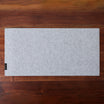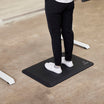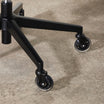Did you know that some of the greatest minds in history were fans of the standing desk? Amidst the recent 21st century craze for sit-stand desks, convertible and standing desks were invented long ago.
The precise inventor or first model of a standing desk cannot be attributed to a single person in time. However, the oldest record of a standing desk dates back to the 1400s, and belongs to the world renown painter Leonardo Da Vinci, responsible for works such as the Mona Lisa and The Last Supper. It is said that Da Vinci stood at his desk while painting new pieces, as well as sketching new inventions, such as parachutes and flying apparatuses.

Drawing of the first uses of standing desks in history
Furthermore, in 1626, the University of Cambridge became the first educational institution to provide standing desks to its students. The university believed that standing while learning and writing would harness greater intellectual thought.
In the 1700s, standing desks became a symbol for wealth and status. The handcrafted desks could be found in the homes and offices of the rich. At this point in time, their main purpose was to use the large surface to spread maps and documents for easy viewing.
A century later in the 1800s, standing desks became more common than seated desks. In order to save money, employees often did not have their own individual desks, but shared large communal desks, built at standing height, with their coworkers. Even Napoleon Bonaparte, the French Revolutionary, endorsed the use of standing desks. Bonaparte states how the standing position made for quick thinking and better strategy ideation for battle.

Communal desk at Apple Inc.
Similarly, in the United States, Founding Father Thomas Jefferson was also an avid user of the standing desk. As the American statesman disliked being stuck in one position for long periods of time, Jefferson invented his own sit-stand convertible desk, with six legs for added stability, making the table adjustable. The desk was also fashioned with a slanted ratchet top, and enough surface area to fit Jefferson’s folio and documents. Thomas Jefferson utilized this desk through many historical moments, namely composing the Declaration of Independence, as well as while sketching historical architectural blueprints, such as the Virginia State Capitol.
Aside from famous historians and painters, famous writers were also users of standing desks. Charles Dickens, an English writer, and social critic, decorated his study with "books all round, up to the ceiling and down to the ground; a standing desk at which he writes, and all manner of comfortable, easy chairs."

Ernest Hemingway, writing while standing at his desk
Across the globe, Ernest Hemingway, famous American novelist, and a Nobel and Pulitzer Prize recipient, also used a standing desk. Inspired by his editor at the publishing company Scribner's who suffered from a leg injury in World War I, Hemingway decided to use a standing desk as well. Hemingway was often pictured using his typewriter at a standing desk. Before a custom model was built for him, Hemingway can be seen using an old bookcase.
In the 19th century, standing desks had gained popularity for more than just its creative benefits. A book written by American author George Comer states “[I would recommend] the learner to practise, as much as possible, in a standing position; first, because nine-tenths of the business writing is done at standing-desks […], and second because I am satisfied, from long experience and observation, that it is the best position to adopt, both for rapid, continuous writing and health”. As such, classrooms in the 19th century were often outfitted with convertible sit-stand desks to promote circulation in the body. With more and more people seeing standing desks as a tool for efficiency and health, the desk continued to gain popularity.

Winston Churchill's standing desk
The standing desk was also beneficial in times of crisis., During the second World War, Winston Churchill was often seen writing at his standing desk. Churchill, who served at the Prime Minister of the United Kingdom, is respected for his unwavering attempts to bring the Third Reich to an end. Churchill believed in the benefits of a standing desk. One of Churchill’s most famous photographs depicts him at his standing desk, pondering over a plethora of books and documents, while smoking a cigar.
Post war, the craze of standing desks survives. Stan Lee, comic book writer best known for his Marvel Comics said that he “always wrote standing up — good for the figure — and always faced the sun — good for the suntan!”

Stan Lee, writing outside at his standing desk
Presently, the modern standing computer desk design can be attributed to Max Banfield in his book The Posture Theory. 18 years after his first iteration of a standing desk was published, Banfield published a paper linking the “undetectable illnesses in office workers” to leaning too far forward onto the desk, causing the compression of organs, the chest, and abdomen. Although the paper was not initially well received, Banfield continued to update versions of the standing desk, adding different platforms, and changing positions of the desk for ease of use. Banfield’s designs are what came to inspire today’s $6 billion/year US sit-to-stand revolution.
With corporate and sedentary jobs increasing significantly since the 1900s, the popularity of standing desks has soared since studies released the ill effects of excessive sitting. From presidents, to authors, to painters, some of the greatest minds and historical figures have utilized the standing desk to further themselves and their works.
While standing desks were more of a status symbol in history, they are much more accessible nowadays. Check out Rise Desk’s standing desks here.
























